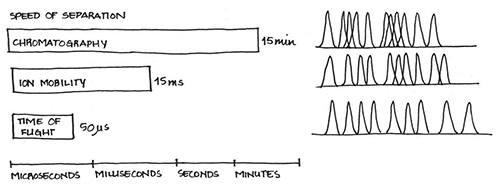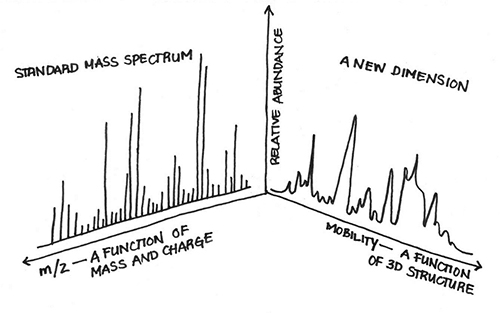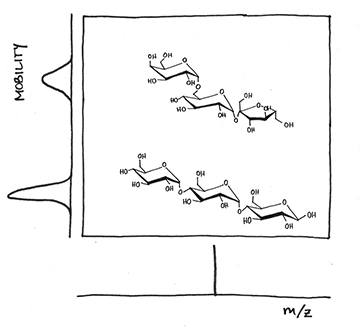Mass spectrometry is ultimately a game of separation. The better you can tease apart the constituent molecules of a mixture, the more accurate resulting mass measurements can be achieved. Chromatography cannot separate all classes of molecules or may be insufficient to match acquisition capacity of the downstream mass spectrometer. The speed of ion mobility separation (in milliseconds) fits between that of chromatography (seconds) and a TOF analyzer (microseconds), so it offers an additional opportunity to fine-scale sample separation.

Heterogeneous samples generate very complex spectra with a number of overlapping or even indistinguishable m/z peaks. Ion mobility separates compounds based on their collisional cross section, which is primarily a function of three-dimensional shape. Considering this intrinsic parameter in addition to the m/z ratio of each ion allows you to separate ions along an additional scale, which resolves overlapping m/z peaks, reduces chemical background and increases the dynamic range of the system for more in-depth characterization of the sample.

The more known about a compound, the more confident its identification. In mass spectrometry the precursor mass of ions are determined with ppm mass accuracy. QTOF technology additionally generates isotopic patterns to confirm the elemental composition. Retention time and characteristic fragmentation patterns or reference ions further support confident identification. With ion mobility separation the collisional cross section becomes a further orthogonal parameter for compound identification that serves as an additional informative qualifier for screening approaches or for establishing libraries.
.jpg)
Compounds with the same or very similar elemental composition are practically indistinguishable by mass, even with premium high resolution mass spectrometers. Unaffected by sample matrix and consistent across experimental conditions, ion mobility offers an additional dimension of resolution that often even separates structural isomers and enables a new level of analysis depth.
